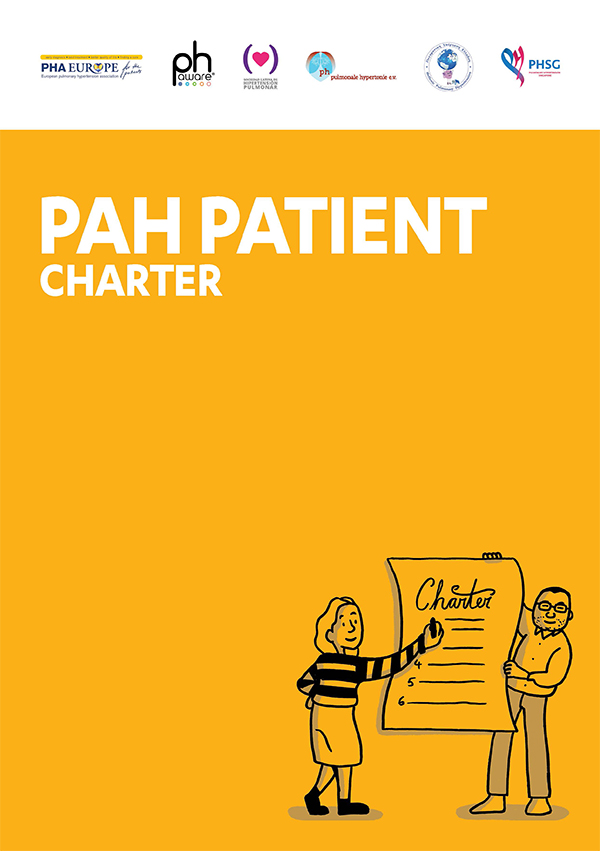A high standard of care

PAH is a rare, progressive disease that currently has no cure. The immediate goal is to prolong survival whilst improving the quality of life for those living with the disease. To achieve these goals, there are certain standards people living with PAH should expect from their care.
What is PAH and Who Does it Affect?
PAH is classed as a type of pulmonary hypertension (PH). PH is a wider term used to describe the presence of high blood pressure in the lung circulation due to any cause. PAH is caused by the walls of the arteries in the lungs becoming tighter and narrower.
PAH is a rare disease: Its estimated prevalence is between 50-100 million people worldwide, affecting women, men, and children of any age or ethnic background.
Even when treatment is optimal, PAH impairs daily life and limits survival. There is limited awareness of the signs and symptoms of PAH among healthcare professionals, which is a contributing factor to the current delay in diagnosis.
There are a number of types of PAH. Idiopathic – which means there is no known or precipitating factor – is the most common type.
In some cases, PAH may be associated with other conditions, such as congenital heart disease or connective tissue disease.
Regardless of what type of PAH a person has, the treatment options remain the same.
Timely Diagnosis and Treatment is Vital
As PAH worsens over time, it is crucial to ensure patients receive early diagnosis and treatment, in order to more effectively slow progression of the disease.
Early diagnosis has been shown to be linked with better outcomes.1 However, PAH is difficult to diagnose. A key challenge is that the early symptoms (e.g. breathlessness, dizziness and fatigue) are not specific to PAH and can be easily confused with many other conditions.
Outlining Standards of Holistic Care
The PAH Patient Charter outlines, in four standards, what people living with PAH should expect from diagnosis to ongoing management of their condition.
Based on the European Society of Cardiology/European Respiratory Society (ESC/ERS) international guidelines – the PAH Patient Charter was developed by an international, multidisciplinary steering group of patients, patient advocates, specialist physicians and nurses from the PAH global community.
The PAH Patient Charter standards are:
-
You should expect to receive a timely and accurate diagnosis.
As the symptoms of PAH are similar to those of more common conditions, it can take an average of two years from the onset of symptoms to receive a diagnosis in countries with developed healthcare systems. A feasible ‘timely’ diagnosis should be significantly less than this.
If you have been told by your doctor they suspect you may have PH, you should expect to be offered tests in-line with applicable diagnostic guidelines to confirm if you have the condition, and which type, PAH or other PH group.
-
You should expect your healthcare professionals to listen to your preferences and involve you in decisions about your care and treatment.
This means that you should expect your healthcare professionals to discuss the different kinds of available care and treatment, ask you about what is important to you and what you want your care and treatment to achieve.
This will allow you to make an informed decision together with your physician about your care plan.
-
Your health should be regularly assessed, and you should be informed about the full range of available, evidence-based treatment options.
You should expect your healthcare professionals to conduct a risk assessment to help them set a holistic care plan that is most appropriate for you. This should be conducted every three-to-six months to evaluate your care plan.
After a risk assessment you should be informed of the results, the full range of available, evidence-based treatment options and what they recommend for you.
-
You should have access to holistic care and social support.
You should expect your healthcare professionals to direct you towards information and support services that will help you and your family live well with PAH. This includes information about your local patient advocacy group and where to access support for caregivers.
For more detailed information, click here to find the full PAH Patient Charter.
* The PAH Patient Charter was developed from the outputs of a meeting held in Berlin, Germany, in March 2019. The meeting participants included patients, patient advocacy group representatives and healthcare professionals from the PAH global community; the content of the Patient Charter was informed entirely by the discussions, reflecting their own views and perspectives on the best holistic care package for people with PAH. This project was initiated and funded by Actelion Pharmaceuticals Ltd, a Janssen Pharmaceutical Company of Johnson & Johnson.
References
1. Humbert M, et al. Early detection and management of pulmonary arterial hypertension. European Respiratory Review 2012; 21:306-312.

